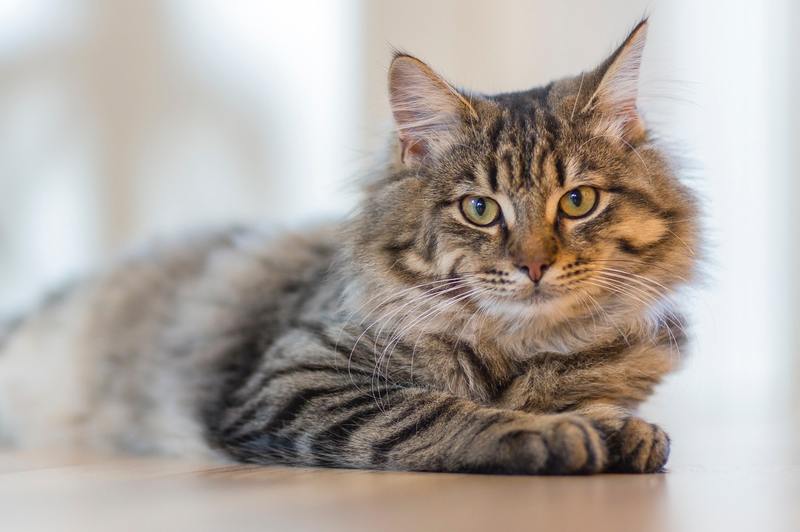The ways on how to treat mold exposure in cats are oral antifungal drugs, antifungal sinus medication, and gastric lavage and suction. Other symptoms can also be treated individually, including fluid therapy to prevent dehydration. Below are the details on how to administer these treatments.

Treatments
1. Oral antifungal drugs
Oral medication is the most common treatment for fungal toxicosis in cats. This method is designed to get rid of the fungus from the cat’s body. The medication may take weeks to months and must be monitored with kidney performance due to an increased risk of renal damage.
2. Antifungal sinus treatment
This method is usually used to treat infection from the genus Aspergillus via the respiratory system. Under anesthesia, a tube is inserted into the respiratory system to block the sinuses. A topical antifungal medication is then inserted through the sinus passage, with the treatment lasting about an hour.
3. Gastric lavage and suction
This procedure aims to cleanse the stomach of its contents to get rid of the toxic material. It is advantageous if the source of contamination is poisonous mushrooms or any contaminated food. The only drawback of this method is gastrointestinal distress.
4. Symptomatic treatment and fluid therapy
Other symptoms may show with the mold infection, including seizure, fever, and pain. Your veterinarian will prescribe the appropriate medications to alleviate these conditions and may also recommend dietary changes. In cases where your pet suffers from diarrhea, vomiting, or lack of appetite, IV fluid can be administered to prevent dehydration, provide nutrition, and dose medications.
Recovery
If promptly treated, the prognosis for cats infected with molds is generally good. For those with chronic exposure, permanent internal damage and fatality are a possibility. Ensure that your beloved pet will not be infected again by doing the following:
Clean and sanitize
Get rid of the source of mold exposure, including bedding materials in your cat’s living space. If your pet likes to hide under furniture, check out these tips on preventing cats from loitering under the bed.
You can also do the same when you’re thinking how to stop your cats from going under the recliner. These spaces are generally not appropriately cleaned and maybe damp, which are the perfect conditions for mold growth.
Weed out your garden
If your cat ingested toxic mushrooms, check out the source of the fungi. Get some scissors and cut down the culprit.
Stay in contact with your vet
Medication usually continues at home, so make sure to heed the vet’s call on the proper dosage and time of giving your cat their medicine. Also, follow the dietary changes stringently. Lastly, monitor your cat closely and dial-up your vet if the symptoms worsen.
Symptoms of mold exposure in cats
Unlike humans, cats generally do not have a way of complaining if something is amiss with their health. It is up to the owners to monitor their pets for any symptoms of mold infection, which includes:
- Lack of appetite
- Vomiting
- Diarrhea
- Weight loss
- Dehydration
- Abdominal bloating
- Nasal discharge
- Fever
- Confusion or abnormal behavior
- Slow growth
- Weakness
- Lethargy
- Incoordination
- Tremors or seizures
- Coma
- Liver toxicity
- Death
- Bloody nose
- Sneezing
- Difficulty breathing
- Rapid breathing
- Blood in feces
The last five items in the list, plus other allergy-like symptoms, are usually observed in cases of black mold infection. This infection is caused by the microorganism Stachybotrys chartarum, which produces mycotoxins more fatal than the microorganism itself. Also, antifungal chemicals may work with the mold, but the spores and toxins it produces are much more resilient.
Prevention
Molds are hard to eliminate. Once they establish their colonies, they produce spores that travel through the air. These spores are resistant to most mold-killing chemical agents and other physical treatments.
These spores stay dormant to avoid getting killed by fungicide. Once there is already a favorable condition for growth, that is when they activate themselves and multiply.
With this information, we can prevent mold growth by eliminating the conditions necessary for its growth. What are those? These factors are abbreviated as FATTOM.
FATTOM stands for Food, Acidity, Time, Temperature, Oxygen, and Moisture. Below are the details on how these factors affect mold growth and how we can use them to prevent their proliferation.
- Food – For molds, any organic matter such as old bread is enough for them to grow. Throw away any leftover food properly and clean your pantry from top to bottom.
- Acidity – Usually, molds require a neutral range (pH 7.0) of acidity to grow. This is why acidic (e.g., vinegar) and basic (e.g., baking soda) agents are great fungicides.
- Time – The time molds have for growth must be reduced to a minimum since they are hard to eliminate. Please get rid of them at the first sign of infestation.
- Temperature – In warmer places, mold growth is more frequent. However, extreme temperatures are usually fatal for them.
- Oxygen – Most molds need oxygen to live, so you may opt to vacuum pack your cat’s food if you have a way to do it.
- Moisture – The number one way to prevent molds is to get rid of damp spaces. Molds can live with small amounts of water, so dehumidifiers are an excellent option to prevent their growth.
Conclusion
In this article, we discuss how to treat mold exposure in cats. Hopefully, you can prevent them from being infected in the first place by following the mold growth prevention tips given here.

What type(s) of antifungals are used for cats? My vet hasn’t heard of anything, and I would like to start my cats on a mold detox program. I’m working on getting the house remediated, and have tested positive for Ochratoxin A. I’m sure my cats are also affected.